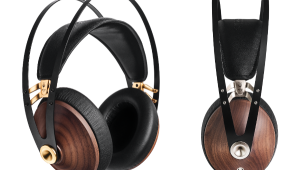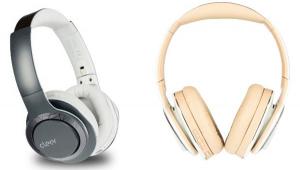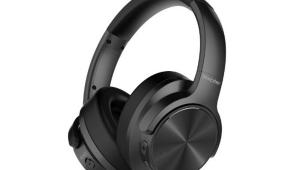Shure SE846 In-Ear Headphone
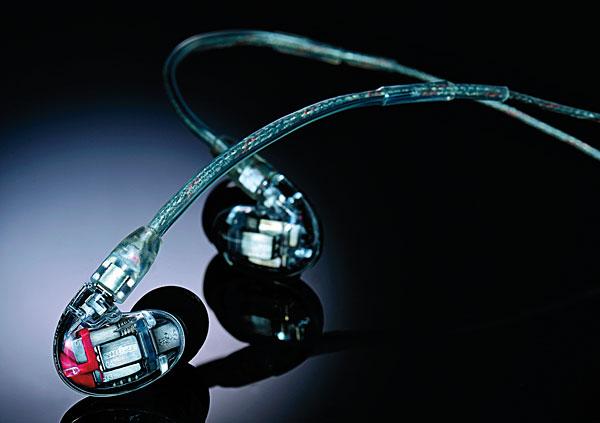
AT A GLANCE
Plus
Four balanced armature drivers
Customizable frequency response
User-replaceable cables
Minus
Not as good at isolating outside noise as custom in-ears
THE VERDICT
The SE846 combines state-of-the-art engineering with great musicality.
You guys know Shure; it’s best known as a microphone manufacturer, but millions of vinyl lovers have had long-term affairs with Shure’s phono cartridges. The company jumped into the earphone market in 1997 and focused on pro users—musicians and sound engineers—but audiophiles quickly got the word. Microphones, cartridges, and earphones have one thing in common: They’re all “transducers.” Microphones convert sound into electrical signals; cartridges convert groove wiggles into electrical signals; earphones convert electrical signals back into sound. The all-new SE846 reference-grade earphone was in development for four years.
The three-way design features four proprietary balanced armature drivers (two bass, one midrange, and one treble). Let’s stop right there. I have a feeling that some of you might be wondering why any headphone needs four drivers; wouldn’t one get the job done? It’s a good question, so later in this review I’ll compare the SE846 with the best single-driver earphone I’ve heard to date.
The aforementioned two identical bass drivers (Shure calls them “subwoofers”) are mated to a stainless-steel low-pass acoustic filter that starts rolling off at 75 hertz and is down 10 decibels at 250 Hz. Shure claims the SE846 is the first multidriver earphone with such a steep crossover. That’s a good thing because it reduces the bass drivers’ overlap with the midrange driver, which lowers distortion and produces cleaner bass response. The crossover from the midrange to the high-frequency driver is also more tightly controlled than what’s typically seen in other multidriver in-ears, as well as earlier-generation Shures. Next, the SE846’s micro-injected stainless-steel manifold routes the outputs of the four drivers to a stainless-steel nozzle (the part where the sound leaves the earphone and the tips attach). You can remove the nozzle and insert one of three sound-shaping filter options: flat; +2.5 dB from 1 to 8 kHz; and –2.5 dB from 1 to 8 kHz. I started with the flat filter but eventually opted for the +2.5, as the sound just seemed better balanced that way. Still, tastes vary, and it’s nice to have the option of getting the tonal balance you want. The removable nozzle also simplifies cleaning out earwax that sometimes migrates to an earphone’s innards. Neat!
The SE846 has a lower rated impedance than that of most other earphones, which range from 16 to 25 ohms; the SE846 is spec’d at 9 ohms at 1,000 Hz. Shure engineers are quick to point out that the impedance rises to 16 ohms at 60 Hz, where the current demands are higher. Whatever, I had no problems with my iPod Classic or any headphone amp in my extensive collection driving the SE846s.
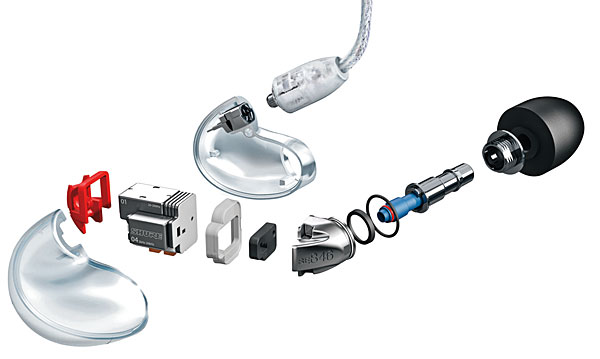
Cable failure is the most common cause of earphone problems, but like all Shure earphones, the SE846 has user-replaceable cables. In fact, it comes with two Kevlar-reinforced cables, 45 and 60 inches long. They’re a bit thicker than most in-ear cables, and strain-relief on the connectors is robust. You’d have to really manhandle these cables to break them. I was surprised to see that Shure doesn’t include one of their CBL-M+ Apple- or Android-compatible cables (with mike and controls). If you need that cable, it’s available for around $50.
The SE846 is a high-resolution device, so it reveals nuance in recordings with rare precision. Take Neil Young’s Massey Hall 1971 on DVD-Audio. It’s a truly stunning recording that features Young alone onstage with just a guitar and occasionally on piano, when he was in his prime. The venue’s rich hall ambience, the appreciative audience: It’s all there, and the SE846 provides you with the microphone’s intimate perspective.
Young’s no-frills recording took my breath away with its stark reality, but Elvis Costello and the Attractions’ “King Horse” from Get Happy!! was heavily produced, and the mix puts the music inside a densely layered reverb cloud. There’s a lot going on, so much so that the song can sound like a mess on lesser headphones. But here on the SE846, the instrumentation and the vocals are clearly defined and float free of the reverb. That’s really impressive.
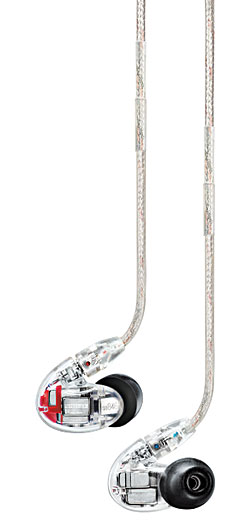 As soon as I started auditioning the SE846, I knew I had to challenge it to a face-off with Sennheiser’s IE 800 in-ear headphone. The two ’phones use very different technologies: Whereas the SE846 has four balanced armature drivers and a complex crossover network, the IE 800 has just a single 7.5mm dynamic driver. The IE 800’s earpieces are polished ceramic housings; the SE846’s are clear plastic and larger. And yes, the two ’phones sound different. On Thom Yorke’s Eraser CD, the SE846’s bass is bigger, bolder, and more impactful and textured, but the IE 800 seems a little better balanced and smoother overall. On Graham Nash and David Crosby’s “Where Will I Be?” (from their self-titled debut as a duo), the SE846 was spot-on; indeed, the sound was beyond reproach. In comparison, the IE 800 scaled back the vocals, losing some of their body. I also noted that with older albums recorded on analog tape, the tape hiss sounded more genuinely analog over the SE846, while the IE 800 changed the hiss into narrower-band noise. As I listened to a wide range of music, I kept going back to the SE846, because it brought out more of the differences in sound quality from one recording to the next. The IE 800 made them sound a little more alike.
As soon as I started auditioning the SE846, I knew I had to challenge it to a face-off with Sennheiser’s IE 800 in-ear headphone. The two ’phones use very different technologies: Whereas the SE846 has four balanced armature drivers and a complex crossover network, the IE 800 has just a single 7.5mm dynamic driver. The IE 800’s earpieces are polished ceramic housings; the SE846’s are clear plastic and larger. And yes, the two ’phones sound different. On Thom Yorke’s Eraser CD, the SE846’s bass is bigger, bolder, and more impactful and textured, but the IE 800 seems a little better balanced and smoother overall. On Graham Nash and David Crosby’s “Where Will I Be?” (from their self-titled debut as a duo), the SE846 was spot-on; indeed, the sound was beyond reproach. In comparison, the IE 800 scaled back the vocals, losing some of their body. I also noted that with older albums recorded on analog tape, the tape hiss sounded more genuinely analog over the SE846, while the IE 800 changed the hiss into narrower-band noise. As I listened to a wide range of music, I kept going back to the SE846, because it brought out more of the differences in sound quality from one recording to the next. The IE 800 made them sound a little more alike.
I also compared the SE846 with a set of reference-grade JH Audio JH13 headphones, which had been custom-molded to my ear canals. First thing: The customs more effectively hush external noise, so for anyone who listens on trains, planes, etc., that may sway your buying decision. Sound-wise, however, the SE846 more than held its own with the JH13; not only that, but it was immediately obvious the SE846 had a richer/warmer tonal balance. Both headphones delivered the goods on Ghatam, the CD by the all-percussion band the Antenna Repairmen, whose dynamics swing from oh-so-soft to jump-out-of-your-seat loud. But the sparkling percussion on David Chesky’s The Zephyrtine ballet score, in 192-kHz/24-bit audio, perfectly demonstrated the SE846’s airy transparency. I’ve never heard better sound from a set of earphones.
The Shure SE846 is a brilliant design, one that marries state-of-the-art engineering with a rare musicality. I can’t wait to see how the competition reacts to Shure’s home run!
Specs
Type: In-ear
Impedance: 9 ohms
Price: $999; 1,250 MSRP
- Log in or register to post comments













